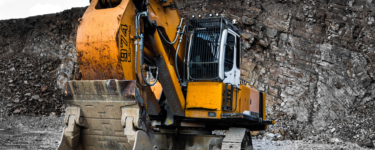Should You Put Telematics Devices on Your Trailers, Attachments, and Other Non-Powered Rental Equipment?
When equipment rental companies first roll out a Connected Assets program, they often start with their largest, most valuable machines. Loaders, excavators, bulldozers, and telehandlers are the usual suspects – and for good reason. These tend to have the largest purchase price, the highest operating expenses, and the most complex maintenance requirements. This makes them a logical starting point for a telematics program.
However, as you move toward a true connected assets strategy – one where you have full visibility into your entire fleet at all times – you may consider expanding your telematics program into non-powered equipment, attachments, and other specialty equipment. Enabling a non-powered asset with telematics services has become a more affordable value proposition; the return on investment can easily be 3-4x the up-front expense. As you work to more efficiently manage preventive maintenance, reduce operational costs, and share important information with your end users, here’s what you need to keep in mind.
If you’re using Connected Assets to streamline preventive maintenance, you’ll want to include attachments and non-powered assets that require frequent inspections or service.
Preventive maintenance is just as important for attachments as it is for heavy machinery. Your service technicians need to lubricate and tighten fittings, clean hoses, check for leaks and cracks, and touch up chipped paint to prevent rust, along with other machine-specific tasks.
If you don’t keep up with these requirements, you run the risk of an unexpected breakdown. You’ll have to eat the cost of a repair or a replacement, while also losing out on potential rental revenue while the asset is down. Including attachments and towables in your connected assets program helps you increase your compliance with preventive maintenance schedules and reduce costly downtime.
If you’re using Connected Assets to reduce the operational costs associated with pickup and delivery, you’ll need full visibility into all your equipment - including your attachments.
Many equipment rental companies are exploring Connected Assets as a way to streamline their business processes and reduce their operating costs. Lean operations, for example, requires equipment to be recovered and turned as quickly as possible, but this is easier said than done without full visibility into every asset’s real-time location and status.

For instance, drivers can easily overlook attachments or smaller non-powered equipment on their pickup runs if they don’t have a clear way to visualize all the assets. The cost of a return trip to retrieve the asset can quickly eat into your profits. And, of course, if you have to drive 50 miles to the customer’s jobsite and 50 miles back to the rental yard, your cost is the same whether you’re retrieving a $1,000 attachment or a $50,000 attachment. This is where visibility into every asset – not just the extremely expensive ones – becomes critical.
Related Content: How Connected Assets Takes Rental Inventory Management to the Next Level
If you’re using Connected Assets to share telematics data with your customers as a value-added service:
Why do your customers rent equipment from you instead of your competitors? Sometimes it comes down to rates or availability, but in many instances, it’s because you’re able to deliver better value and better service.
In this regard, Connected Assets help you increase your competitive advantage. Helping your customer find assets that have been moved, misplaced, or used in unauthorized locations makes them more productive. In turn, you get to improve your perceived value as a partner and win more repeat business.
If you’re using telematics to deter theft:
Of course, telematics can also help deter equipment theft.
While large rental equipment can certainly be stolen, it’s a difficult endeavor. Smaller tools and towable items, however? Portable generators, compressors, and attachments are lower-hanging fruit - especially if they aren’t properly secured on a jobsite.
Tracking devices can make malicious actors think twice about stealing your attachments and non-powered assets. Meanwhile, providing geolocation data to law enforcement can increase your chances of successfully recovering equipment if it were to be stolen. Preventing just one loss can more than cover the cost of adding telematics devices to your attachments.
Start Building Your Connected Assets Strategy with InTempo MX
InTempo MX delivers a comprehensive Connected Assets solution for equipment rental companies. You can consolidate data from all your assets – from off-highway machinery and over-the-road applications to non-powered equipment and attachments – on a single, easy-to-use platform. Quickly spot exceptions (such as equipment that has left its designated geofence or machines that are coming due for preventive maintenance) and take prompt action.
To learn more – or to request a demo – contact us today.


